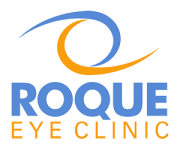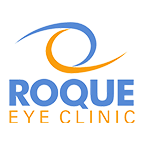MEIBOMIAN GLAND DYSFUNCTION
Key Learning Points
- Understand Meibomian gland dysfunction (MGD) and its importance in eye health.
- Recognize the symptoms and causes of MGD.
- Explore the various treatment options and home remedies.
- Learn preventive measures to avoid the worsening of MGD.
- Discover answers to frequently asked questions about MGD.
Introduction
Meibomian gland dysfunction (MGD) is a prevalent condition affecting the meibomian glands in the eyelids. These glands are crucial for producing the oil layer of the eye's tear film and preventing the tear layer from evaporating. When these glands are not functioning properly, they can lead to dry eye symptoms, discomfort, and various vision problems. At Roque Eye Clinic, we provide comprehensive information on managing and treating MGD effectively.
What is Meibomian Gland Dysfunction?
The meibomian glands, located in the eyelids, secrete oils that maintain tear film stability and eye comfort. Meibomian gland dysfunction occurs when these glands become blocked, or the oil secretion is insufficient or of poor quality. This dysfunction can lead to dry eye symptoms, such as irritation, redness, and a gritty eye sensation.
Causes and Risk Factors of MGD
Several factors can influence meibomian gland dysfunction:
- Age: The function of meibomian glands tends to diminish as people age.
- Hormonal Changes: Hormonal imbalances, particularly due to menopause, can increase the risk of MGD.
- Eyelid Hygiene: Poor eyelid hygiene can lead to blockages in the meibomian glands.
- Chronic Blepharitis: Inflammation along the eyelid margin can affect gland function.
- Contact Lens Use: Long-term use of contact lenses can exacerbate MGD.
Symptoms of Meibomian Gland Dysfunction
Recognizing the symptoms of MGD early can help in managing the condition effectively:
- Persistent dryness
- A gritty or burning sensation
- Watery eyes (paradoxically)
- Eyelid redness and swelling
- Blurred vision intermittently
Treatment Options for MGD
Medical Treatments
- Warm Compresses: Applying warm compresses to the eyelids helps loosen the oils in the gland ducts.
- Eyelid Scrubs: Using prescribed scrubs can improve eyelid hygiene and clear blockages.
- Antibiotics: Topical or oral antibiotics may be prescribed in cases of significant inflammation.
- Steroid Eye Drops: These may be used temporarily to reduce inflammation.
Advanced Treatments
- LipiFlow: A device that applies heat and pressure to the eyelids to clear blockages.
- Intense Pulsed Light Therapy (IPL): Typically used in dermatology, IPL can also help relieve MGD by reducing eyelid inflammation and melting waxy deposits in the gland ducts.
Preventive Measures
To prevent the onset or worsening of MGD:
- Maintain good eyelid hygiene.
- Manage screen time to reduce eye strain.
- Consider using a humidifier if you are in a dry environment.
- Schedule regular eye exams, especially if you have risk factors for MGD.
Frequently Asked Questions About Meibomian Gland Dysfunction
-
What is the best home remedy for MGD?
- Regularly applying warm compresses and proper eyelid hygiene can be effective home remedies.
-
Can diet affect Meibomian gland dysfunction?
- A diet rich in omega-3 fatty acids can help improve gland function.
-
Is MGD curable?
- While MGD can be managed effectively with treatments, it is typically a chronic condition.
-
How often should I perform eyelid hygiene if I have MGD?
- Daily eyelid cleaning is recommended for individuals with MGD.
-
Does MGD cause permanent eye damage?
- If untreated, severe cases of MGD can lead to eye damage and vision loss. Regular eye care is crucial.
-
Can children have MGD?
- Yes, children can also suffer from MGD, particularly if they have associated allergic conditions or poor eyelid hygiene.
Take-Home Message
Meibomian gland dysfunction is a manageable condition with the right care and treatment. Early diagnosis and consistent treatment can help alleviate symptoms and prevent complications. If you experience any MGD symptoms, consult a specialist at Roque Eye Clinic for a comprehensive evaluation and personalized treatment plan.
Bibliography
- Nichols, K.K., Foulks, G.N., Bron, A.J., et al. "The international workshop on meibomian gland dysfunction: executive summary." Invest. Ophthalmol. Vis. Sci. 2011.
- Geerling, G., Tauber, J., Baudouin, C., et al. "The international workshop on meibomian gland dysfunction: report of the subcommittee on management and treatment of meibomian gland dysfunction." Invest. Ophthalmol. Vis. Sci. 2011.
- American Academy of Ophthalmology. "Meibomian Gland Dysfunction and Treatment." 2020.






